EYE-CATCHING OVERPASS ART

FOR MAGIC VALLEY EC MEMBERS
SERVE UP SWEET SPRING CAKES
GRANDMA’S THREE-LEGGED BEST FRIEND

EYE-CATCHING OVERPASS ART

SERVE UP SWEET SPRING CAKES
GRANDMA’S THREE-LEGGED BEST FRIEND
The real working ranch of TV’s ‘Yellowstone’














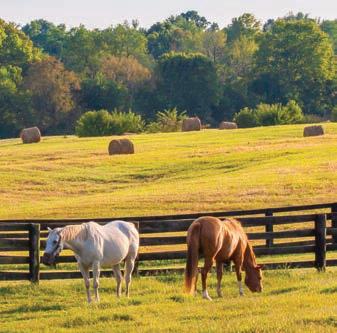




























The people of the storied Four Sixes Ranch—as seen on ‘Yellowstone’— work to preserve its legacy.
Story by Margaret Buranen
Photos by R.J. Hinkle
Some of the 700–800 quarter horses at the Four Sixes Ranch.
by R.J. Hinkle
Michael Ford with his sculpted panel that celebrates Wichita Falls’ Hotter’N Hell Hundred cycling event. Photo courtesy Michael Ford
Michael Ford’s larger-than-life art merges trafc and culture along Texas highways.
Story by Sheryl Smith-Rodgers Photos courtesy Michael Ford

FUN TIMES for a 6-year-old wakeboarding on Coleto Creek Reservoir outside Victoria turned into a teenager’s passion. And for 14 years, Blake Daniel, pictured above, practiced and competed, even as he became a distribution engineer at South Texas Electric Cooperative.
Finally, in September 2023, Daniel reached the pinnacle—capturing a wakeboarding world title in his age group in an international competition in Portugal.
“It was crazy. I can’t explain it,” he said. “It’s something that I feel like we’ve been working for forever. Finally, to win is an unreal feeling.”
Many family members, wearing shirts that read, “I throw Texas-sized tantrums,” shared Daniel’s joy. In wakeboarding lingo, tantrums are good things— blackflips on a board.
ENTER CONTESTS AT TEXASCOOPPOWER.COM
$500 RECIPE CONTEST
Pumpkin and Spice
FOCUS ON TEXAS PHOTOS Parenthood
RECOMMENDED READING
On National Paranormal Day, May 3, consider the mysterious musical presence that sometimes intrudes upon a Houston library’s stillness. Read Shh! from December 2020.

One of Texas’ largest and oldest—Big Tree, a live oak at Goose Island State Park near Rockport—is estimated to be up to 1,100 years old.
Tell us how you would fnish that sentence. Email your short responses to letters@TexasCoopPower.com or comment on our Facebook post. Include your co-op and town. Here are some of the responses to our March prompt: Music makes me …
Forget my troubles for a little while.
RENEE TWEED VIA FACEBOOK
Release those wonderful endorphins that make me grab a broom and give a concert for my plants and fsh.
JAMES D. WILLIAMS VIA FACEBOOK
Reminisce about the time in my life that the song came out.
HARRY MACK UNITED COOPERATIVE SERVICES GRAFORD
Think of the many times I danced with my dad.
PATTI FISHER BO WIE-CASS EC TE XARKANA
Connect to yesterday, hope for the future and dance today.
MICHELLE WINN
PEDERNALES EC KYLE
Visit our website to see more responses.

Pier Placement
Buoyed by Vice [March 2024] stated that the Balinese Room “sat atop a pier that jutted into the bay.” I thought it was on the seawall, jutting out over the Gulf of Mexico.
John Eaves Pedernales EC Leander
EDITOR’S NOTE You’re correct. We have fxed the story online.
Katy’s Spunk
Gordon Jennings was my husband’s great-great-grandfather [A Revere of Our Own, March 2024]. I am writing the story of our family history for our eight grandchildren, and one of them is named Katy. I believe she has as much spunk as the first Katy Jennings!
Judy Jennings Wise EC Paradise

MARCH 2024 The Retirement of a Legend “Danny Williams and his son, Gordon, used to come to Concho Valley Electric Cooperative for safety meetings. If you didn’t learn something from Danny, you weren’t listening.”
TOMMY EARNEST CONCHO VALLEY EC SAN ANGELO
My grandfather made quite a few wooden puzzles in the 1920s and ’30s and apparently sold them, as some have labels from Vincil Novelty Co. [Puzzling Times, February 2024]. My brothers, all my cousins and I still have many of them.
Dorothee Johnson Grayson-Collin EC Whitesboro
Adorable Donkeys
As a former longtime breeder, trainer and exhibitor of donkeys, it warms my heart whenever something positive is written about these wonderful animals [Touched by an Angel, January 2024]. The story of Angel riding on a float during a Christmas parade was priceless.
Sandra Osborne Neeley United Cooperative Services Grandview
Editor, Texas Co-op Power 1122 Colorado St., 24th Floor Austin, TX 78701
Please include your electric co-op and town. Letters may be edited for clarity and length. Texas Co-op Power
TEXAS ELECTRIC COOPERATIVES
BOARD OF DIRECTORS
Chair Neil Hesse, Muenster
Vice Chair Avan Irani, Robstown
Secretary-Treasurer Bryan Wood, San Augustine
Board Members Dale Ancell, Lubbock
Mark McClain, Roby • Julie Parsley, Johnson City • Brandon Young, McGregor
PRESIDENT/CEO Mike Williams, Austin
COMMUNICATIONS & MEMBER
SERVICES COMMITTEE
Mike Ables, Bellville • Matt Bentke, Bastrop
Marty Haught, Burleson • Gary Miller, Bryan Zac Perkins, Hooker, Oklahoma
John Ed Shinpaugh, Bonham
Rob Walker, Gilmer • Buf Whitten, Eldorado
MAGAZINE STAFF
Vice President, Communications & Member Services Martin Bevins
Editor Chris Burrows
Associate Editor Tom Widlowski
Production Manager Karen Nejtek
Creative Manager Andy Doughty
Advertising Manager Elaine Sproull
Communications Specialist Samantha Bryant
Digital Media Specialist Caytlyn Calhoun
Assistant Production Manager Alex Dal Santo
Print Production Specialist Grace Fultz
Food Editor Vianney Rodriguez
Senior Designer Jane Sharpe
Communications Specialist Claire Stevens
Proofreader Louie Bond
TEXAS CO-OP POWER Volume 80, Number 11 (USPS 540-560). Texas Co-op Power is published monthly by Texas Electric Cooperatives. Periodical postage paid at Austin, TX, and at additional ofces. TEC is the statewide association representing 76 electric cooperatives. Texas Co-op Power’s website is TexasCoopPower.com. Call (512) 4540311 or email editor@TexasCoopPower.com.
SUBSCRIPTIONS Subscription price is $4.44 per year for individual members of subscribing cooperatives and is paid from equity accruing to the member. If you are not a member of a subscribing cooperative, you can purchase an annual subscription at the nonmember rate of $7.50. Co-op members: Please notify your co-op of address changes or other subscription requests.
POSTMASTER Send address changes to Texas Co-op Power (USPS 540-560), 1122 Colorado St., 24th Floor, Austin, TX 78701. Please enclose label from this copy of Texas Co-op Power showing old address and key numbers.
ADVERTISING Contact Elaine Sproull at (512) 486-6251 or esproull@texas-ec.org for information about purchasing display ad space in Texas Co-op Power and/or in our 26 sister publications in other states. Advertisements in Texas Co-op Power are paid solicitations. The publisher neither endorses nor guarantees in any manner any product or company included in this publication.
COPYRIGHT All content © 2024 Texas Electric Cooperatives Inc. All rights reserved. Reproduction of this issue or any portion of it is expressly prohibited without written permission. Willie Wiredhand © 2024 National Rural Electric Cooperative Association.

The people of the storied Four Sixes Ranch—as seen on ‘Yellowstone’— work to preserve its legacy
IFyou watched Yellowstone spinoff 1883, you probably saw Joe Leathers. But you likely didn’t know it.
He was on screen for about three seconds, driving cattle on horseback.
“It was a long-distance shot, so you couldn’t tell it was me,” he says.
It was a bit part, but Leathers is the leading man at the ranch that has become a centerpiece for the Yellowstone TV series. He has managed West Texas’ Four Sixes Ranch since 2008.
The show and its characters are make-believe, but Leathers’ work is quite real. He spends “as many days as possible” working cattle with his colleagues at the ranch, though his job keeps him out of the saddle more than he would like.
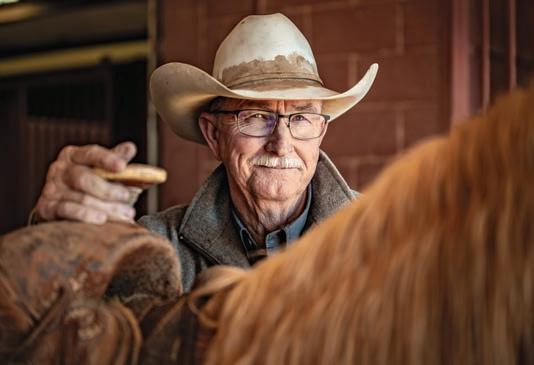
Yellowstone, created and written by actor Taylor Sheridan, tells the story of a fictional Montana ranch owned by the Dutton family. Four Sixes makes its on-screen debut in the fourth season, when ranch hand Jimmy Hurdstrom is sent away to improve his attitude and cowboy skills. But instead of hating it, Jimmy loves the ranch and wants to stay there.
The real-life Four Sixes covers more than a quarter-million acres, making it one of the 10 largest ranches in Texas.
The main ranch, near Guthrie, east of Lubbock, comprises 142,372 acres and gets its electricity from South Plains Electric Cooperative. In the Panhandle, the Dixon Creek Ranch division in Carson and Hutchison counties spans another 114,455 acres. A third portion, the Frisco Creek Ranch division, covers 9,428 acres in Sherman County and is served by Rita Blanca Electric Cooperative.
There are plenty of outdoor sights to film at the ranch, including sprawling fields and swift, beautiful horses herding cattle. Wildlife includes quail, deer, Barbary sheep, turkeys, wild hogs, coyotes, bobcats, migrating ducks and geese, songbirds, rattlesnakes, and even some antelope. Every year the main ranch house is surrounded by migrating butterflies for two or three days around Halloween. “It’s the most beautiful sight,” Leathers says.
The Burnett family established Four Sixes more than 150 years ago and passed it down for four generations.
OPPOSITE The mare pasture at Four Sixes Ranch in West Texas. ABOVE Joe Leathers has managed Four Sixes, which covers more than a quarter-million acres, since 2008.
In 1870, Samuel “Burk” Burnett bought some cattle already branded 6666 (contrary to a legend about the ranch being named for a winning poker hand). He kept on buying more land and more cattle, and the four sixes stuck.
Burnett left the ranch to his only surviving grandchild, Anne Valliant Burnett Hall (later Tandy), in trust for her unborn child. Upon the death of “Miss Anne,” as she was known, in 1980, her only child, Anne Burnett Windfohr Marion, inherited her grandfather’s and great-grandfather’s estates, including Four Sixes.
Nowadays, Four Sixes is a whole lot more than a part-time TV set. It’s still a working ranch with large herds of highquality beef cattle and the quarter horses it breeds.
The ranch raised longhorns, shorthorns and Herefords in its earlier years, but for the past 25 years, the cattle herd has been entirely Black Angus. Leathers says this breed has provided the most consistent quality.
One thing that hasn’t changed: The cattle have always been cared for the same way—on horseback. Each of the 16–18 cowboys working the ranch has several quarter horses for their work. Vaquero (Spanish for cow herder) is Leathers’ favorite horse. He says the sorrel gelding “has a big motor. He’s tough, very athletic and has a lot of cow sense. He’s a pretty exceptional horse.”
The ranch’s use of quarter horses is no wonder given that Marion and Four Sixes have a deep connection with the breed. Marion’s mother, Miss Anne, co-founded the American Quarter Horse Association in 1940, and Marion displayed a devotion to her animals.
“Anne [Marion] was a strong woman, a very good businessperson. She knew cattle and horses,” Leathers says. “Anne was very giving and very demanding. She didn’t set you up for failure. She set you up for success.”
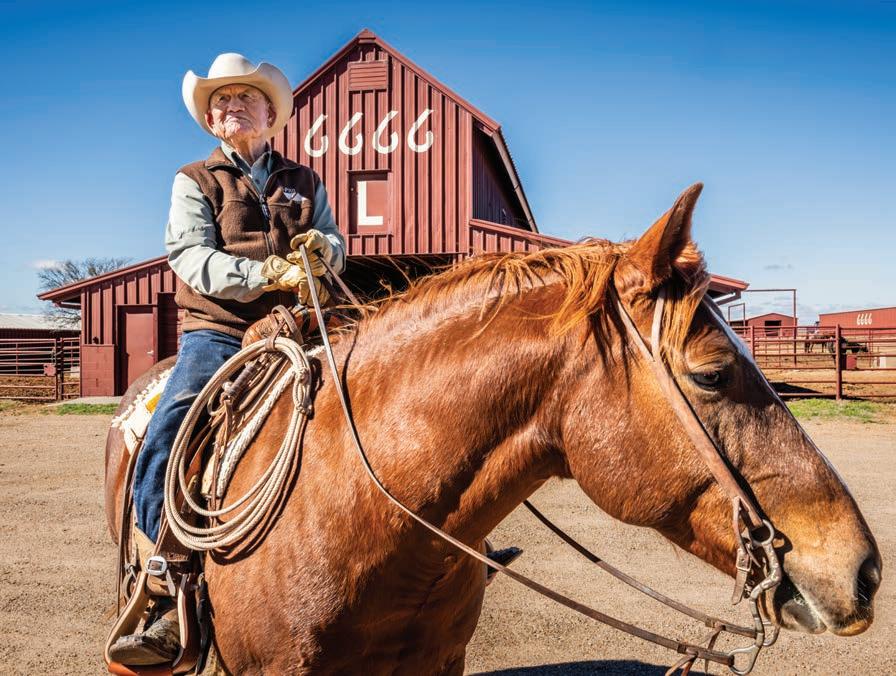
During one crisis, the drought of 2010–11, the ranch went to great lengths to keep its herd and its acres healthy.
“There was no water between Guthrie and Nebraska,” Leathers says. “We ended up taking our cattle to nine ranches in five states, leasing land to make sure we didn’t hurt our land. Our herd was not completely back home until 2015.”
After Marion assumed control of Four Sixes in 1980, she hired Dr. Glenn “Doc” Blodgett as the ranch’s resident veterinarian and horse division manager. Together they established a first-class quarter horse breeding program. Adding artificial insemination services for Four Sixes’ stallions allowed mares across the U.S. to be bred to them.
Today, Dr. Nathan Canaday fills Blodgett’s role. He and two associate veterinarians care for the ranch’s herd of 700–800 quarter horses.
Canaday first came to the ranch in 2006 as a college intern at the veterinary hospital. He returned the next summer. The experience “convinced me to become a veterinarian,” he says. “I thought if I could become a veterinarian at a large ranch like Four Sixes, I would have my dream job.” Canaday became a full-time vet at Four Sixes in 2011 and assumed his current role in 2022, after Blodgett died.
The veterinary team works out of a clinic with state-of-theart imaging and other equipment. The hospital also serves
‘It’s a LOVE AFFAIR with the land of WEST TEXAS.’
other residents in the area, including several big ranches.
Canaday says he and his team are the only vets within 60 miles. They treat the region’s horses for colic and lameness, do dentistry work, and even provide breeding services.
“We keep the history and culture of ranching, but we operate on the cutting edge of veterinary medicine,” Canaday says.
When Sheridan decided to add the Texas storyline to Yellowstone, he secured Marion’s permission to film at Four Sixes. Though shooting the show means bringing a small army of hundreds of cast and crew members to the ranch, it “really doesn’t interfere with ranch work,” Leathers says. “There’s a lot of people, equipment and vehicles, but they get it done and then they’re gone.”
Pandemic restrictions delayed the filming of Season 4 until August 2020, and it began to air in late 2021. Sadly, Marion didn’t live to see her beloved ranch on TV. She died in February 2020 at the age of 81. Her will stipulated that all her ranch holdings be sold.

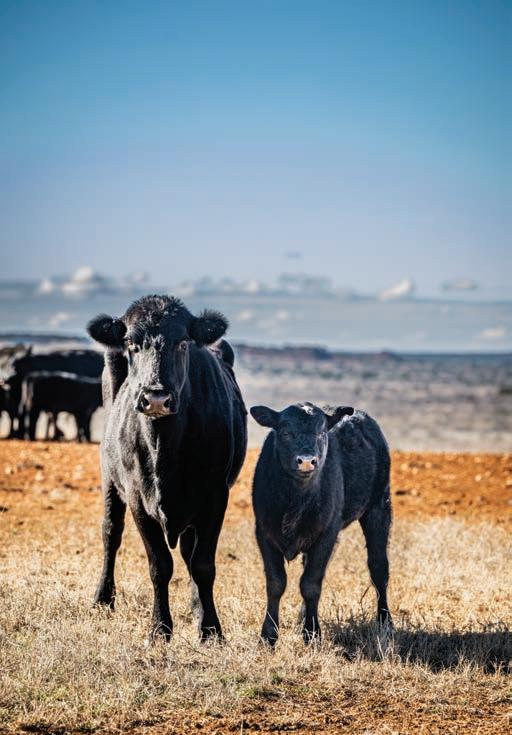
That meant Four Sixes would not be Burnett familyowned for the first time since its founding. Fortunately, a new owner who shared the family’s values was interested. Sheridan, who was raised in Fort Worth, put together a group of investors and became the majority owner in 2022.
Sheridan also has a ranch down the road, in Weatherford, and another in Wyoming. But this one is special for him.
“It’s a love affair with the land of West Texas,” Sheridan told Fort Worth Magazine in 2022. “There’s a tremendous amount of discipline that it takes to build a ranch like this. It takes strength, excellence, integrity and faith, and that’s the main mission statement of the ranch. We’re going to live up to that.”
Leathers says that having all of Four Sixes under one owner helped the ranch exist for 150 years. Now that the ranch is in Sheridan’s hands, “he’s determined for it to be here for another 150 years,” Leathers says.
“You have to make money for the ranch to be successful,
OPPOSITE Boots O’Neal has been a working cowboy for more than 75 years, including 30-plus years at Four Sixes. LEFT Two of the thousands of Black Angus cattle that make up the ranch’s herd.
Before it was a backdrop for Yellowstone, Four Sixes was a setting for several Marlboro cigarette commercials during the 1960s. Yellowstone’s fnal six episodes are set to premiere in November. TEXABAMA CROTON
but you can still hold on to the traditions. Taylor has a passion for the cowboy life. Four Sixes will continue it on. We’ll continue to be a leader in breeding and ranching.”
Protecting that legacy means protecting the animals and the land of Four Sixes through conservation. The ranch works with an environmental firm and employs a variety of best practices.
To prevent soil erosion and save precious water, workers have built dams to create small lakes and ponds. They’ve cleared 100,000 acres of invasive mesquite and cedar. Composted manure from the barns is the only fertilizer used.
Leathers is proud of how they’re caring for the land that has served generations of Texans.
“The cattle and the wildlife are not just coexisting,” he says. “They’re both thriving.” D
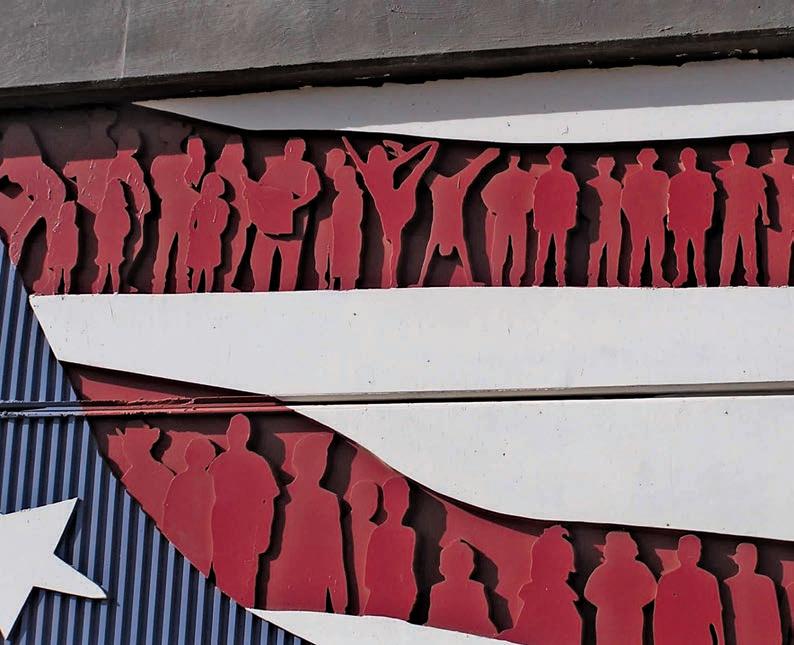

Munday Mayor Robert Bowen still remembers when he showed up at City Hall nearly two decades ago to have his picture taken. More than 350 other residents of the small Knox County town between Abilene and Wichita Falls were also there. Everyone had agreed to pose to help with the creation of a bridge mural—part of a highway project to widen and reroute U.S. 277, which now runs through the east part of town.
FROM ABOVE
Carvings of the residents’ silhouettes now form the textured red stripes of a huge depiction of an American flag that unfurls across an overpass retaining wall where U.S. 277 crosses Texas 222. There’s a boy bouncing a basketball, a wife kissing her firefighter husband, two girls holding watermelon slices, a cowboy toting his saddle. Bowen— who’s still mayor—stands with two neighbors.
“Like any small town, we were worried when the highway went around us,” he recalls. “But we’ve done OK, and we’ve enjoyed our mural. It’s unique.”
Munday’s road art is among more than 50 pieces across Texas that Michael Ford designed over the course of about 14 years of working for the Texas Department of Transportation. “I’ve been retired 10 years, and I still get to talk
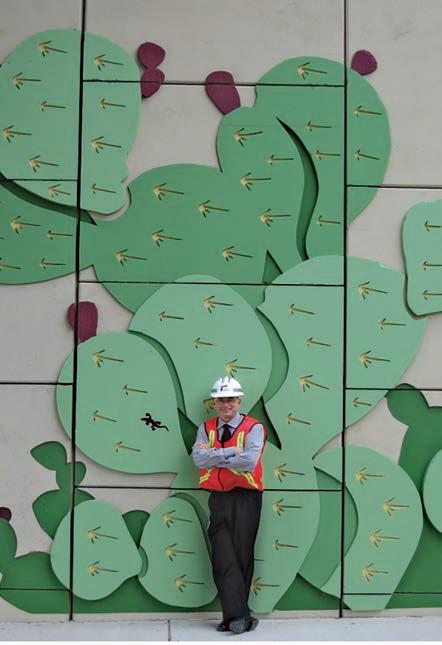
about my public art,” quips Ford, who lives near Wimberley and is a Pedernales Electric Cooperative member. “I like to say my hobby became my job.”
Artistic since childhood, he served as a medical illustrator while in the Army and later worked 10 years for a civil engineering firm. In 1994, TxDOT’s bridge division in Austin hired Ford as a draftsman. Soon he was helping engineers create graphics for their presentations. In the meantime, his wife, Betsy, signed him up for a stonecarving class.
“During lunch at work, I’d pull out my limestone block and chisel on it,” Ford recalls. “When my boss saw my gargoyle sculpture, he said, ‘Somehow, someday, we’re going to put one on a bridge.’ ”


Michael Ford’s larger-than-life art merges traffic and culture along Texas highways
A few months later, Ford had his chance. When TxDOT’s Lubbock division wanted a whimsical logo to dress up a new east-west freeway, he offered to do the work himself. The project became his. He also acquired a new job title— graphics artist. That was in 1998.
Using his own furrowed brow as a model, Ford sculpted Windy Man as a symbol of Lubbock’s infamous gusts and dust. With flowing hair and puffy cheeks, the 3D concrete face blows a dust cloud through pursed lips. However, after the first of a planned 20 went up in 2004—after years of highway design and construction—opponents demanded that the “pagan” Windy Man be removed.
Eventually, TxDOT tried again and installed one Windy Man at the intersection of the Marsha Sharp Freeway and
Avenue L in 2011. He blows dust high above an arts district bridge mural, also designed by Ford. Lubbock overpasses also display red yuccas and a Buddy Holly tribute, courtesy of Ford.
“They all have stories,” Ford says. “Their main purpose has always been to give residents something that’s unique to their community.”
Town by town, Ford worked with mayors and residents to design what they desired. About five years before Windy Man, Childress debuted Ford’s talents. Just west of the town, on the edge of the Panhandle near the Oklahoma border, a gigantic stagecoach, windmill and wheat heads— set into overpass retaining walls on U.S. 287 at County Road 9—symbolize the town’s strong ties to agriculture.
Similarly, Goree in Knox County and Robstown in Nueces County chose cotton bolls to grace their highway walls. And, like Munday, Goree showcases an American flag and Texas flag in addition to cotton. Sinton, just north of Corpus Christi, features a cattle drive on all four overpass ramps as U.S. 181 comes into town from the east.
In Wichita Falls, concrete bicyclists in helmets race across retaining walls in celebration of the city’s annual Hotter’N Hell Hundred cycling event. Comanche residents chose rolling hills, live oaks and Native Americans on
horseback to honor their natural heritage.
Kemp’s ridley sea turtles adorn concrete pillars of an overhead sign on the John F. Kennedy Memorial Causeway in Corpus Christi. White-tailed bucks and does pose among prickly pear cactuses in Laredo.
During an Interstate 35 expansion project, TxDOT offered cities the chance to have their own bridge art along frontage roads. Jump off the freeway at Salado to see a stagecoach driven by three cowboys and six horses. At Troy, a bird flits from fence post to post in a series of four windmill murals.
Farther north in West, three murals depict twirling Czech dancers and a polka band, reflecting the city’s cultural roots. In Abbott, silhouettes of a farmer on a tractor and a windmill behind a derelict barn stretch across retaining walls.
“I always designed on a dime,” says Ford, who used pencil sketches and computer software to construct his images that, when enlarged, measure up to 100 feet wide and 50 feet high. Instead of expensive rubber, he carved sheets of extruded foam to form molds that precast concrete companies used to make 5-by-10-foot concrete panels. At work sites, construction crews pieced the panels into place like a puzzle.
And like any good puzzle, some of Ford’s artworks contain a secret.
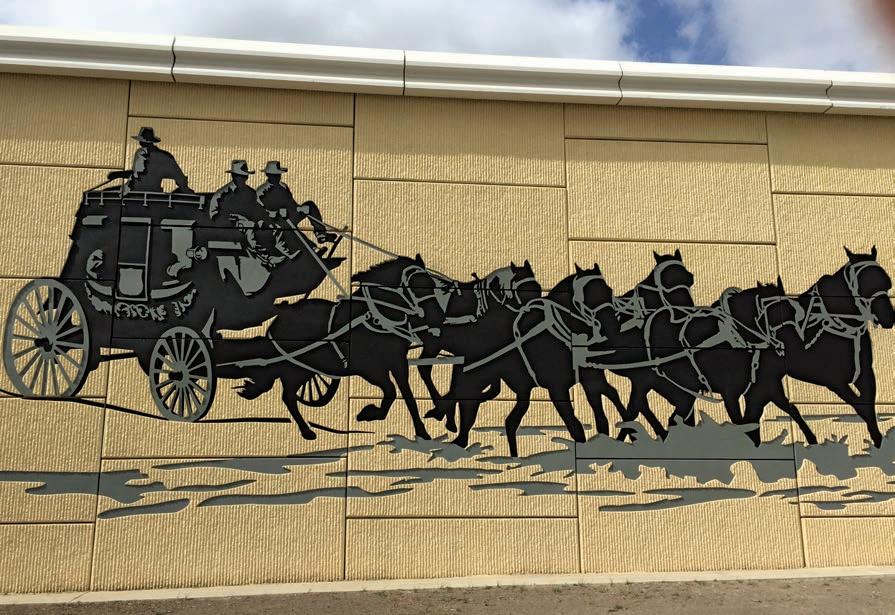
CLOCKWISE FROM OPPOSITE A stagecoach seems to be charging through Salado. Ford with bas-relief troops just east of Copperas Cove on Fort Cavazos. Ford sculpts Windy Man in extruded foam. Czech dancers in West.

“If the design allowed, I’d hide a tiny gecko, like in the oak leaves of a state seal and Windy Man’s hair,” he says. “That became my maker’s mark and the brand name that I continue to use as an artist—Art Gecko.”
Nowadays Ford pours his creativity into crafting sculptures from gourds. Since his retirement from TxDOT, he’s transformed the hard-shelled fruits—kin to pumpkins and melons—into award-winning pieces, such as fairy houses, abstract sculptures, a fanged monster mask and a retro spaceship on the moon.
As Ford and his wife make their way to gourd festivals, they sometimes pass his bridge art. His reaction is what he hopes other travelers have.
“They always bring a smile,” he says. “And I love it when I get messages and photos from people who have spotted one of my walls. Life doesn’t get much better than that.” D
Find this story on our website for a map of Ford’s highway art and direct links to each of the pieces mentioned.
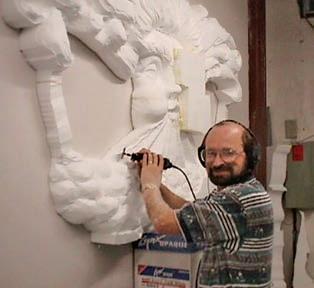
U.S. fag wall, Munday Etched into the U.S. 277 overpass at Texas 222. Czech dancers, West Along the Interstate 35 frontage road, where it crosses West Oak Street/T M W Parkway.
Windmill, wheat and a covered wagon, Childress Cast into the north side of Highway 287, where it crosses Farm to Market Road 164/County Road 9.
Stagecoach walls, Salado Along the Interstate 35 frontage road near Williams Road/Salado Plaza Road.
Pilot walls, Kingsville Where East Caesar Avenue runs under U.S. 77.






Now you can


are a vanishing legacy of America’s past –genuine history you can hold in your hand!
Never to be minted again!
Although millions of these silver coins were melted in the 1900s, the 1921 Morgan – from the final year of the classic series – survived. Never to be minted again, this historic Morgan dollar can be yours for just $29.95 (regularly $87.00) –SAVE 65% off regular prices! Order today and get FREE shipping to your home!
You’ll also receive a handpicked trial selection of fascinating coins from our No-Obligation Coins-on-Approval Service, from which you may purchase any or none of the coins – return balance within 15 days – with option to cancel at any time. Order now –before they vanish forever!






Now you can satisfy your desire for unique turquoise jewelry with these gorgeous designs brought to you exclusively from Te Bradford Exchange. All pieces in the collection are handcrafted and showcase at least one carat total of pear-shaped and round genuine turquoise stones, while antiquing throughout the designs further enhances the Southwestern look.
To take advantage of this special subscription ofer and begin receiving your jewelry, send in your Priority Reservation now. Ten, about every other month, another issue of the “Spirit of the Southwest” Turquoise Jewelry Collection will arrive at your door at the same low issue price as shipment one. On your 3rd shipment, you will receive the FREE Folding Jewelry Case along with the Cuf Bracelet.
Each piece of handcrafted jewelry in the collection is afordably priced at just $49.99* billed prior to shipment. Each issue arrives in a velvet pouch along with a Certifcate of Authenticity. To reserve your collection, let us hear from you as soon as possible. Simply send in your Priority Reservation! Tis is a limited-time ofer available only from Te Bradford Exchange!







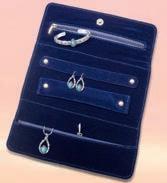




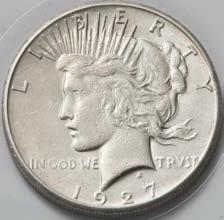












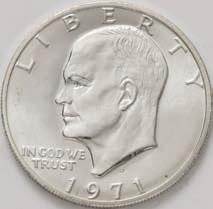


The heritage of American Silver Dollars is rich and diverse, marked by stunningly beautiful designs, leading to an enduring desirability in the hearts of collectors around the world. In this iconic U.S. Silver Dollar set, spanning nearly 150 years, you’re getting FIVE American Silver Dollars issued over the last 15 decades that each reflect the history, culture and economic aspects of the United States.
We’ve Done the Work for You with this Extraordinary 5-Pc. U.S. Silver Dollar Set
Each of these U.S. Silver Dollars is sought-after by collectors individually, but this set includes every design of U.S. Silver Dollar in American history, issued from 1878 to 2024!
Morgan Silver Dollar: First struck 146 years ago in 1878, the Morgan has a historic legacy as the coin that helped build the American West. Minted until 1904, then again in 1921, this 90% silver coin with its iconic Lady Liberty design is the most collected vintage Silver Dollar in the world. Extremely Fine (XF) condition coin included in set.
Peace Silver Dollar: With a beautiful design memorializing peace following the end of World War I, the 90% silver Peace Dollar was intended as a one-year only release struck in 1921—but it proved so popular with the American people, it was struck until 1928, then again in 1934-35. Extremely Fine (XF) condition coin included in set.


Eisenhower Dollar: The last circulating U.S. dollar coin, the Eisenhower Dollar, aka the “Ike Dollar,” was prized by Americans, with its design featuring war hero President Dwight D. Eisenhower, backed by an image symbolizing the Apollo II moon landing. First struck with silver 1971-1976, the Eisenhower Dollar in this set was struck in 40% silver for collectors, and you will receive a coin in Brilliant Uncirculated (BU) condition.





























Silver Eagle Type 1: The first-ever U.S. Silver Dollar minted in 99.9% silver, these coins were first minted in 1986 following President Ronald Reagan’s signing of the Liberty Coin Act into law on July 9, 1985, which authorized the U.S. Mint to strike America’s new silver bullion coin. This gorgeous Silver Dollar features the original, revered Type 1 “Heraldic Eagle” reverse design by John Mercanti, 12th Chief Engraver of the U.S. Mint. Brilliant Uncirculated (BU) condition coin included in set.
Silver Eagle Type 2: In honor of the popular 99.9% silver coin’s 35th anniversary in 2021, the Silver Eagle received a new, esteemed Type 2 “Eagle Landing” reverse design. This is the current issued coin by the U.S. Mint. Brilliant Uncirculated (BU) condition coin included in set.
You’ll save both time and money on this 150 Year U.S. Silver Dollar Set, with FREE SHIPPING and a BONUS presentation case, plus a new and informative 150 Years U.S. Silver Dollars booklet! Call right now to get yours before they’re gone!












GENERAL MANAGER’S MESSAGE
BRIAN R. ACOSTA
SERVICE. MISSION. COUNTRY. You likely identified immediately (and correctly) that these three words can be associated with our nation’s veterans. They also succinctly describe a core co-op ethos. While veterans are innately motivated to serve, in a similar vein, electric co-ops are guided by foundational principles that put community first. After all, electric coops were founded to bring electricity to rural areas, where there was none. In doing so, they powered local economies and helped them to thrive.
I believe this close connection to an essential mission is why there are so many veterans in the utility industry and why they’re such a great fit for electric co-ops. Today’s veterans are often skilled and sought-after because of technical expertise and exposure to advanced technology during their years of service. Many veterans have experience in engineering, communications and cybersecurity, which are all beneficial for the utility industry. Magic Valley Electric Cooperative is proud to employ 11 veterans, and we’re especially grateful for their contributions to the co-op and to our community.
Leadership and Team-Building
Our veteran colleagues joined the co-op equipped with training in leadership and teamwork. That’s because while on duty, servicemen work closely together; their lives depend on it. This fosters a high level of selfdiscipline, personal responsibility and passion for excellence.
The utility industry is increasingly complex and is undergoing profound transformation. While there are the traditional engineering and vegetation management aspects of the utility industry, it now also encompasses technology, cybersecurity and the electrification of the transportation sector. Veterans are adept at responding to changing conditions and learning and adapting to new technologies, which is essential in our evolving industry.
Mission-Oriented Outlook
Working for an electric co-op is more than a job. There’s a clear mission in the work—to help our members and the community. We have a strong sense of commitment and responsibility to our members.
It’s similar to the sense of duty and responsibility that veterans experience in the military. They feel deep, personal responsibility and commitment to their country and to the co-op members we serve. Veterans are goal-oriented, wanting to do right by their co-op and their friends and neighbors.
Giving Thanks
May is Military Appreciation Month, and at MVEC, we’re grateful to have veterans within our ranks, and we’re proud to serve them and their families within our community. But beyond our gratitude, we demonstrate our deep appreciation through our actions and ongoing commitment to veterans and their families.
At the national level, electric co-ops support the Vets Power Us program, which recruits and honors veterans and their families. This e!ort involves partnering with other electric co-ops across the country along with the departments of labor and defense, the Veterans Administration, and other agencies to bring vets to the energy industry.
This month, I hope you’ll join me in recognizing the sacrifices veterans have made to our great country—and the many contributions they continue to make to our wonderful community.
P.O. Box 267 2200 West 2nd Street Mercedes, TX 78570
GENERAL MANAGER
Brian R. Acosta
BOARD OF DIRECTORS
Barbara S. Miller, President
Rolando Alaniz, Vice President
Douglas P. Martin, Secretary-Treasurer
Frank A. Ferris, Assistant Secretary-Treasurer
Adrienne Peña-Garza, Board Member
David S. Morales, Board Member
Joshua L. Klostermann, Board Member
PAYMENT OPTIONS
• MVEC Connect App
• Online bill payment
• AutoPay
• Visa, Discover, AMEX and Master Card accepted
DISTRICT OFFICES
• 2910 W. Monte Cristo Rd. Edinburg, 78541
• 1825 N. Indiana Rd. Brownsville, 78521
• 1311 S. Cage Blvd. Pharr, 78577
• 411 S. Val Verde Rd. San Carlos, 78542



Brian R. Acosta General Manager


One sure way to save energy is to cook and eat outdoors. Here are six ways to spruce up your outdoor kitchen:
Add on. Outdoor living spaces like patios, kitchens or covered porches are getting larger and more elaborate. Especially as families are spending more time at home and skipping summer vacations, a larger space can make sense and provide a great place to host family and friends.
Splurge on the grill. The grill is the star of any patio’s show, so a round-top charcoal model might be too basic. The latest trend favors smoker-style grills, which allow the family chef to instill foods with smoky flavor.
Build storage. The more dishes, utensils, cleaning supplies, seat cushions and condiments you can keep outside, the less work each cookout will be. Save trips between the indoor and outdoor kitchens by installing weather-resistant cabinets and elevate your patio design far above the standard stack of plastic storage bins.
Make cleanup easy. Have a sink or outdoor-safe dishwasher built into outdoor cooking and dining area. That will help minimize the number of trips indoors and keep you with your guests longer.
Install an ice maker. Buckets and coolers of ice melt quickly, are messy to clean up and add an extra chore to the to-do list when preparing for company. Most outdoor ice makers are a little bit larger than a dorm refrigerator and can produce anywhere from 50 to 80 pounds of ice per day.
Turn up the heat. You won’t need a patio heater during the dog days of summer, but you will extend the seasonal life of your outdoor room if you install one. Family and guests will be able to dine outdoors as autumn evenings turn crisp.

1 small onion, chopped
2 tablespoons (¼ stick) butter
2 small jars marinated artichoke hearts (6 ounces each), drained and chopped (keep liquid from 1 jar)
6 eggs
⅓ cup grated Parmesan cheese
⅓ cup bread crumbs
½ tablespoon chopped fresh tarragon (basil or chives will work also)
6 slices bacon, cooked and crumbled
Dash ground black pepper
½ cup shredded mozzarella cheese
1. Preheat oven to 325 degrees.
2. In a 10 or 12-inch oven-safe skillet, sauté onion in butter until transparent. Add artichokes and liquid from one jar. Keep on low heat while making the following mixture.
3. In a large bowl, lightly beat eggs. Add Parmesan cheese, bread crumbs, herbs, bacon, pepper and sautéed onions and artichokes. Mix together and pour back into skillet.
4. Remove from stovetop and put in oven. Bake for 25 minutes or until set.
5. Sprinkle with mozzarella and return to oven to melt cheese.
Serves 6–8
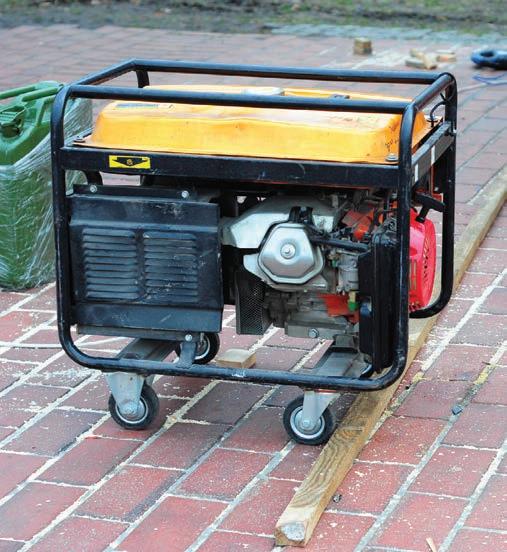
Let’s face it: rough weather happens and sometimes results in power outages. At Magic Valley Electric Cooperative, our goal is to restore power as quickly and safely as possible. But unfortunately, when a major storm hits, power may be out for an extended period.
Anyone who has experienced an extended power outage has likely mulled over the idea of buying a generator, but make sure you have all the facts before you do.
The purchase and installation of a generator is an important and serious decision. Properly done, you gain peace of mind knowing your family can ride out any outage with some degree of comfort. But an incorrectly operated generator can become deadly to you, your family, your neighbors and your electric cooperative’s employees. So let’s look at the decisions you’ll need to make when it comes to purchasing a residential generator.
First, do you want to back up your entire home or just portions? The biggest drawback to a permanently installed whole-house generator is the cost.
The next decision is sizing the generator. Online tools abound; just type “generator sizing guide” into your browser and o! you go.
That said, a typical portable generator is at least 6,500
watts with a startup capacity of around 8,000 watts. When motor loads start, they draw more power than they use when running.
Permanent generators have dedicated switching devices that integrate them into your home’s power system; portable models require you to remove them from storage, set them up, connect them and start them up.
Improperly connected generators can easily back feed into MVEC’s grid. As electricity flows back into the lines, the transformers boost the voltage to lethal levels. They can also push electricity into lines our crews are working on while believing them to be disconnected. Be sure to follow connection instructions closely, and contact us if you have any questions regarding connecting your generator safely.
Use of the generator can be as simple as plugging appliances directly into it. However, this can be cumbersome and somewhat limiting. A better option may be to have a transfer switch installed by a qualified electrician.
This device connects to the circuits you want to power. Connect your generator to the dedicated plug, follow the disconnect procedure and fire it up. Now you’ve got power for your home that’s safe for all.
With generators, you definitely get what you pay for. Cheap models are just that. They may last a couple of years, but after that, parts can be impossible to get. Few things are worse than your generator failing to operate when the lights are out. Definitely go for engines with recognizable brand names. They may cost more, but they will be worth it in the long run.
It’s important to “exercise” your portable generator regularly. Don’t worry, you don’t need to walk your generator. Exercising means—after following all safety procedures—connecting load to it and turning it on to be sure it will run.
While you’re at it, we’d appreciate it if you would let us know you have a generator. We can provide safety and connection tips if needed, which will enhance our line crew’s safety.

In recognition of National Hurricane Preparedness Week, May 5–11, and National Wildfire Awareness Month, it’s a good time to protect important tax and financial information as part of a complete emergency preparedness plan.
The Federal Emergency Management Agency has declared disasters for landslides, severe storms, tornadoes and more, which can have an immediate and lasting impact. Year-round preparation is critically important, and observing Wildfire Awareness Month provides a perfect opportunity for an annual assessment of readiness.
These tips can help you protect personal financial and tax information for a complete preparedness plan. You’re also encouraged to visit ready.gov for additional disaster information.
Original documents such as Social Security cards, birth certificates, deeds and tax returns should be placed inside a waterproof and fireproof container in a safe space. You’re encouraged to make copies of these important documents and store them in a secondary location such as a safe deposit box.
In addition, scanned documents can be stored on a flash drive for easy portability.
All property, especially high-value items, should be recorded. A simple list with current photos or videos may also help support claims for insurance or tax
benefits after a disaster. The IRS disaster loss workbooks in Publication 584, Casualty, Disaster, and Theft Loss Workbook (Personal-Use Property) and Publication 584-B, Business Casualty, Disaster, and Theft Loss Workbook can help individuals and businesses make lists of belongings or business equipment.
Reconstructing or replacing records after a disaster may be required for tax purposes, claiming federal assistance or insurance reimbursement. The more accurately the loss is estimated, the more loan and grant money there may be available.
After FEMA issues a major disaster or an emergency measures declaration, the IRS may postpone certain tax filing and payment deadlines for those who reside or have a business in certain counties a!ected by the disaster. The IRS provides details on states and counties that have been issued relief on the IRS disaster relief webpage.
Individuals in the a!ected areas do not need to call to request this relief. The IRS automatically identifies taxpayers located in the covered disaster area and applies filing and payment relief. Those impacted by a disaster can contact the IRS at 1-866-562-5227 to ask taxrelated questions.
Taxpayers who do not reside or have a business in a covered disaster area but su!ered impact from a disaster should call 1-866-562-5227 to find out if they qualify for disaster tax relief and to discuss other available options.
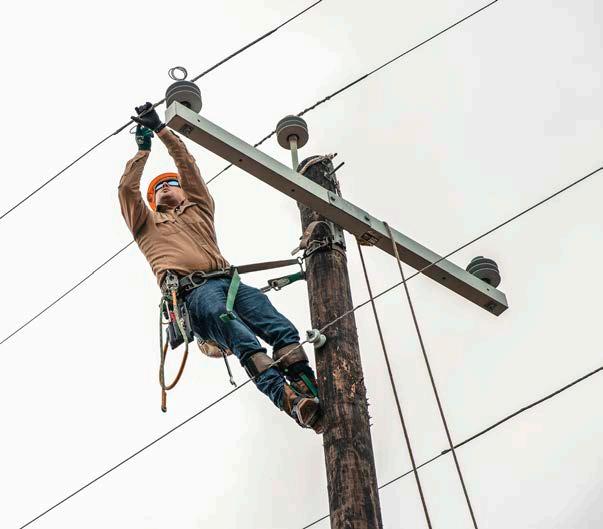
You probably don’t pay much attention to the thousands of utility poles found throughout Magic Valley Electric Cooperative’s service territory, but did you know these tall structures are the backbone of our distribution network?
Strong, sturdy utility poles ensure a reliable electric system, which is why we routinely inspect the poles on our lines. Throughout the year, our crews and contractors check poles for decay caused by exposure to the elements. They know which poles are oldest and conduct inspections through a rotational process. Typically, a standard wooden distribution pole is expected to last more than 50 years.
Occasionally, poles need to be replaced for other reasons besides decay and old age. Weather disasters, power line relocation and car crashes are potential causes for immediate replacement. When possible, MVEC communicates when and where pole replacements will take place so that you stay informed of where crews will be working.
Here’s a quick breakdown of how crews replace a utility pole: When a pole needs to be replaced, crews will start the process by digging a hole, typically next to the pole being replaced. The depth of the hole must be at least 15% of the new pole’s height.
Next, the new pole must be fitted with bolts, cross arms, insulators, ground wires and arm braces—all the necessary parts for delivering safe and reliable electricity. Crews then safely detach the power lines from the old pole. The new pole is then raised and guided carefully into position, and the lines are attached, leaving the new pole to do its job.
So, the next time you come across a co-op crew inspecting or replacing a pole, use caution and know that this process ensures a more reliable electric system for you, our members.

MARK YOUR CALENDAR
Cinco de Mayo Sunday, May 5
Mother’s Day Sunday, May 12
Memorial Day Monday, May 27
Our ofces will be closed in observance of the holiday.

MENSAJE DEL GERENTE GENERAL
BRIAN R. ACOSTA
SERVICIO. MISIÓN. PAÍS. Probablemente identificas de inmediato (y correctamente) que estas tres palabras pueden asociarse con las y los veteranos de nuestra nación. También describen sucintamente un valor central de las cooperativas.
Si bien los veteranos tienen una motivación innata para servir, de manera similar, las cooperativas eléctricas se guían por principios fundamentales que ponen a la comunidad primero. Después de todo, las cooperativas eléctricas se fundaron para llevar electricidad a zonas rurales donde no la había. Al hacerlo, impulsaron las economías locales y las ayudaron a prosperar. Creo que esta estrecha conexión con una misión esencial es la razón por la que hay tantos veteranos en la industria eléctrica y por qué encajan tan bien en las cooperativas.
Los veteranos de hoy suelen ser capacitados y solicitados debido a su experiencia técnica y su exposición a la tecnología avanzada durante sus años de servicio. Muchos veteranos tienen experiencia en ingeniería, comunicaciones y ciberseguridad, que son benéficas para la industria eléctrica. Magic Valley Electric Cooperative se enorgullece de emplear a once veteranos, y estamos especialmente agradecidos por sus contribuciones a la cooperativa y a nuestra comunidad.
Liderazgo y trabajo en equipo
Nuestros colegas veteranos se unieron a la cooperativa equipados con entrenamiento en liderazgo y trabajo en equipo. Esto se debe a que mientras están de servicio, los soldados trabajan estrechamente juntos; su vida depende de ello. Esto fomenta un alto nivel de autodisciplina, responsabilidad personal y pasión por la excelencia.
La industria eléctrica es cada vez más compleja y está experimentando una profunda transformación. Si bien hay aspectos tradicionales de ingeniería y manejo de vegetación en la industria eléctrica, ahora también abarca tecnología, ciberseguridad y la electrificación del sector del transporte.
Los veteranos son hábiles para responder a condiciones cambiantes, así como para aprender y adaptarse a nuevas tecnologías, lo cual es esencial en nuestra industria en evolución.
Enfoque orientado a la misión
Trabajar para una cooperativa eléctrica es más que un empleo. Hay una clara misión en el trabajo: ayudar a nuestros miembros y a la comunidad. Tenemos un fuerte sentido de compromiso y responsabilidad hacia nuestros miembros.
Es similar al sentido de deber y responsabilidad que experimentan las y los veteranos en el ejército. Sienten una profunda responsabilidad personal y compromiso con su país y con los miembros de la cooperativa a quienes servimos. Los veteranos están orientados a objetivos, y quieren hacer lo correcto por su cooperativa y por sus amigos y vecinos.
Agradecimiento
Mayo es el Mes de la Apreciación Militar, y en MVEC estamos agradecidos de tener veteranos en nuestras filas, y nos enorgullece servirles a ellos y a sus familias dentro de nuestra comunidad. Pero más allá de nuestra gratitud, demostramos nuestro profundo aprecio a través de nuestras acciones y nuestro compromiso continuo con los veteranos y sus familias.
A nivel nacional, las cooperativas eléctricas apoyan al programa “Vets Power Us”, que recluta y honra a veteranos y sus familias. Este esfuerzo implica colaborar con otras cooperativas eléctricas de todo el país junto con el Departamento del Trabajo, el Departamento de la Defensa, la Administración de Veteranos y otras agencias para encaminar a las y los veteranos a la industria energética.
Este mes, espero que se unan a mí para reconocer los sacrificios que los veteranos han hecho por nuestro gran país, y las muchas contribuciones que continúan haciendo a nuestra maravillosa comunidad.
GERENTE GENERAL
Brian R. Acosta
MESA DIRECTIVA
Barbara S. Miller, Presidente
Rolando Alaniz, Vicepresidente
Douglas P. Martin, Secretario-Tesorero
Frank A. Ferris, Asistente SecretarioTesorero
Adrienne Peña-Garza, Directora
David S. Morales, Director
Joshua L. Klostermann, Director
OPCIONES DE PAGO
• Pago en línea
• Aplicación móvil MVEC Connect
• Giro bancario automático
• Visa, Discover. AMEX y Master Card aceptadas como forma de pago
OFICINAS DE DISTRITO
• 2910 W. Monte Cristo Rd. Edinburg, 78541
• 1825 N. Indiana Rd. Brownsville, 78521
• 1311 S. Cage Blvd Pharr, 78577
• 411 S. Val Verde Rd. San Carlos, 78542



¡Veteranos, reciban nuestro saludo!
Brian R. Acosta Gerente General
y
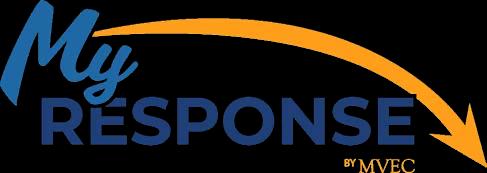
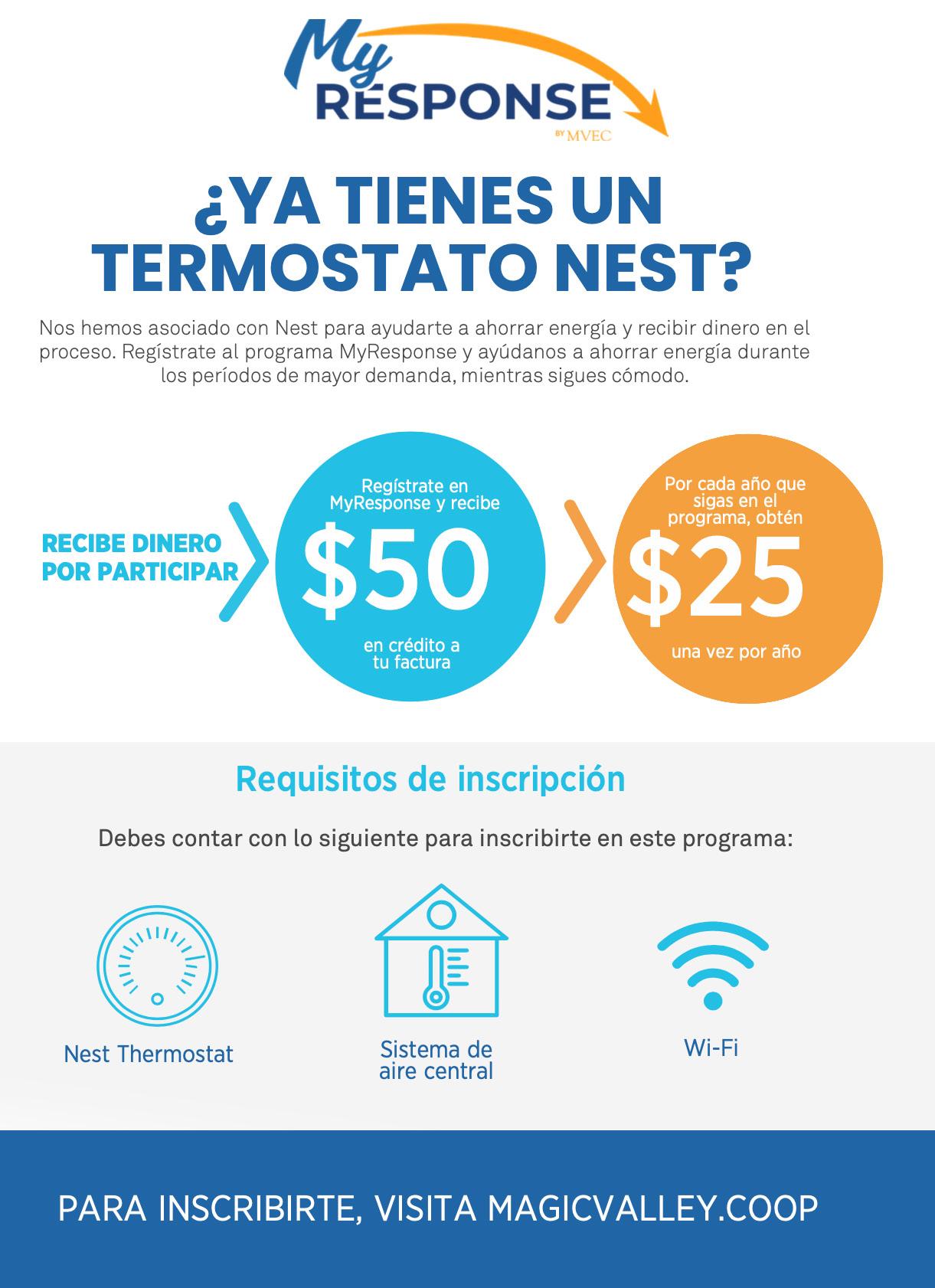

Una forma segura de ahorrar energía es cocinar y comer al aire libre. Aquí hay seis formas de mejorar tu cocina al aire libre:
Amplía tu espacio. Los espacios al aire libre, como patios, cocinas o porches cubiertos, están creciendo en tamaño y complejidad. Especialmente ahora que las familias pasan más tiempo en casa y evitan las vacaciones de verano, tener un espacio más grande puede proporcionarte un excelente lugar para recibir a familiares y amigos.
Invierte en la parrilla. La parrilla es la estrella de cualquier patio, por lo que un modelo básico de carbón redondo podría ser demasiado simple. La última tendencia favorece las parrillas estilo ahumador, que permiten al chef de la casa infundirles sabor a humo a los alimentos.
Construye almacenamiento. Cuantos más platos, utensilios, suministros de limpieza, cojines para asientos y condimentos puedas mantener afuera, menos trabajo será cada comida al aire libre. Ahorra viajes entre la cocina interior y exterior instalando gabinetes resistentes a la intemperie y eleva el diseño de tu patio.
Facilita la limpieza. Haz que limpiar sea más fácil con un fregadero o lavavajillas apto para exteriores en el área de cocina y comedor al aire libre. Eso te ayudará a minimizar la cantidad de viajes al interior y te mantendrá con tus invitados por más tiempo.
Instala una máquina de hielo. El hielo en cubos y hieleras se derrite rápidamente, es difícil de limpiar y añade una tarea extra a la lista cuando te estás preparando para recibir invitados. La mayoría de las máquinas exteriores de hielo son un poco más grandes que un refrigerador estilo dormitorio y pueden producir desde 50 hasta 80 libras de hielo por día.
Aumenta la calefacción. Es posible que no necesites un calentador de patio durante los días más calurosos del verano, pero extenderás la vida estacional de tu espacio al aire libre si instalas uno. La familia y los invitados podrán cenar al aire libre mientras las noches de otoño se vuelven frescas.

1 cebolla pequeña, picada
2 cucharadas (¼ barra) de mantequilla
2 frascos pequeños de corazones de alcachofa marinados (6 onzas cada uno), escurridos y picados (reserva el líquido de 1 frasco)
6 huevos
⅓ taza de queso parmesano rallado
⅓ taza de migas de pan
½ cucharada de estragón fresco picado (la albahaca o cebollines también funcionarán)
6 rebanadas de tocino, doradas y desmenuzadas
Una pizca de pimienta negra molida ½ taza de queso mozzarella rallado
1. Precalienta el horno a 325 grados.
2. En un sartén de 10 o 12 pulgadas apto para horno, saltea la cebolla en la mantequilla hasta que esté transparente. Agrega las alcachofas y el líquido de un frasco. Mantén a fuego lento mientras preparas la siguiente mezcla.
3. En un tazón grande, bate ligeramente los huevos. Agrega el queso parmesano, las migas de pan, las hierbas, el tocino, la pimienta y las cebollas y alcachofas salteadas. Mezcla todo y vierte de nuevo en el sartén.
4. Retira de la estufa y coloca en el horno. Hornea durante 25 minutos o hasta que esté cuajado.
5. Espolvorea con mozzarella y vuelve a colocar en el horno para derretir el queso.
Sirve de 6 a 8 porciones.
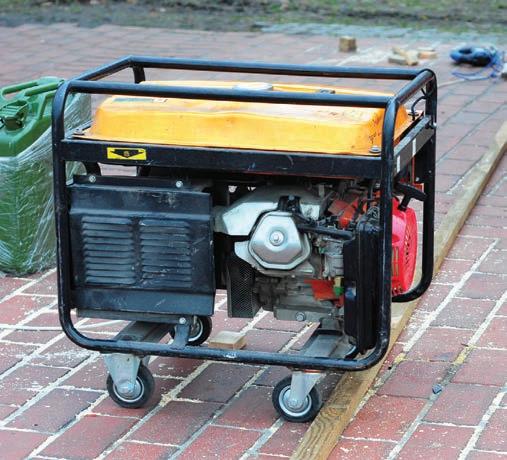
Afrontémoslo: el clima adverso sucede y a veces resulta en cortes de energía. En Magic Valley Electric Cooperative, nuestro objetivo es restaurar la energía de la manera más rápida y segura. Pero desafortunadamente, cuando una gran tormenta golpea, la energía puede estar suspendida por un período prolongado.
Cualquiera que haya experimentado un corte de energía prolongado probablemente haya considerado la idea de comprar un generador, pero asegúrate de tener todos los datos antes de hacerlo.
La compra e instalación de un generador es una decisión importante y seria. Realizada correctamente, te brinda tranquilidad al saber que tu familia puede sobrellevar cualquier corte de energía con cierto grado de comodidad. Pero un generador operado incorrectamente puede ser mortal para ti, tu familia, tus vecinos y los empleados de tu cooperativa eléctrica.
Así que veamos las decisiones que tendrás que tomar cuando se trate de comprar un generador residencial.
Dimensionar
Primero, ¿quieres respaldar toda tu casa o solo partes? El mayor inconveniente de un generador para toda la casa instalado permanentemente es el costo.
La siguiente decisión es dimensionar el generador. Hay abundantes herramientas en línea; simplemente escribe “guía de dimensionamiento de generadores” en tu navegador y listo.
Dicho esto, un generador portátil típico tiene al menos 6,500 vatios, con una capacidad de arranque
de alrededor de 8,000 vatios. Cuando los dispositivos de motor arrancan, consumen más energía de la que utilizan cuando están en funcionamiento.
Integración
Los generadores permanentes tienen dispositivos de conmutación dedicados que los integran en el sistema de energía de tu hogar; los modelos portátiles requieren que los saques del almacenamiento, los configures, los conectes y los enciendas.
Los generadores conectados incorrectamente pueden fácilmente devolver energía a la red de MVEC. A medida que la electricidad fluye de regreso a las líneas, los transformadores aumentan el voltaje a niveles letales. También pueden enviar electricidad a líneas en las que nuestras cuadrillas están trabajando mientras creen que están desconectadas. Asegúrate de seguir de cerca las instrucciones de conexión y contáctanos si tienes alguna pregunta sobre cómo conectar tu generador de manera segura.
El uso del generador puede ser tan simple como conectarle directamente los electrodomésticos. Sin embargo, esto puede ser engorroso y algo limitante. Una mejor opción puede ser instalar un interruptor de transferencia por un electricista calificado. Este dispositivo se conecta a los circuitos que deseas alimentar. Conecta tu generador al enchufe dedicado, sigue el procedimiento de desconexión y enciéndelo. Ahora tienes energía para tu hogar que es segura para todos.
Calidad
Con los generadores, definitivamente obtienes lo que pagas. Los modelos baratos son eso, baratos. Pueden durar un par de años, pero después de eso, las piezas pueden ser imposibles de conseguir. Pocas cosas son peores que tu generador no funcione cuando se va la luz. Definitivamente, opta por motores con marcas reconocidas. Pueden costar más, pero valdrá la pena a largo plazo.
Es importante “ejercitar” tu generador portátil regularmente. No te preocupes, no necesitas sacar a pasear a tu generador. Ejercitar significa, después de seguir todos los procedimientos de seguridad, conectar carga y encenderlo para asegurarte de que funcionará.
Mientras estás en eso, agradeceríamos que nos informaras si tienes un generador. Podemos proporcionar consejos de seguridad y conexión si es necesario, y la seguridad de nuestro equipo de línea mejorará.
Esperemos que la furia de la Madre Naturaleza no derribe líneas eléctricas, pero si lo hace, un generador seguro puede serte de gran ayuda.

En reconocimiento a la Semana Nacional de Preparación para Huracanes, del 5 al 11 de mayo, y al Mes Nacional de Concientización sobre Incendios Forestales, es un buen momento para proteger la información fiscal y financiera importante como parte de un plan completo de preparación para emergencias.
La Agencia Federal para el Manejo de Emergencias ha declarado desastres por deslizamientos de tierra, tormentas severas, tornados y más, que pueden tener un impacto inmediato y duradero. La preparación durante todo el año es importante, y observar el Mes de Concientización sobre Incendios Forestales brinda una oportunidad perfecta para una evaluación anual de tu preparación.
Estos consejos pueden ayudarte a proteger la información financiera y fiscal personal como parte de un plan completo de preparación. También te invitamos a visitar ready.gov para obtener información adicional sobre desastres.
Protege tus documentos
Los documentos originales como tarjetas de Seguro Social, actas de nacimiento, escrituras y declaraciones de impuestos deben colocarse dentro de un contenedor a prueba de agua y fuego en un lugar seguro. Haz copias de estos documentos importantes y almacénalas en un lugar secundario, como una caja de seguridad. Además, los documentos escaneados pueden almacenarse en una unidad flash para una portabilidad fácil.
Hacer un inventario
Todos los bienes, especialmente los artículos de alto valor, deben de ser registrados.
Una lista simple con fotos o videos actuales también puede ayudar a respaldar reclamaciones para seguros o beneficios fiscales después de un desastre. Los Diarios de Pérdidas por Desastre del IRS en la Publicación 584,
Diarios de Pérdidas por Desastre, Accidente y Robo (Propiedad de Uso Personal) y en la Publicación 584B, Diario de Pérdidas por Desastre, Accidente y Robo (Propiedad Comercial) pueden ayudar a personas y negocios a hacer listas de pertenencias o equipos comerciales.
Comienza por reconstruir
Reconstruir o reemplazar registros después de un desastre puede ser necesario para propósitos fiscales, reclamar asistencia federal o reembolso de seguros. Cuanto más precisa sea la estimación de la pérdida, más dinero de préstamos y subvenciones puede haber disponible.
Hay ayuda
Después de que FEMA emita una declaración de desastre mayor o emergencia, el IRS puede posponer ciertos plazos para presentar declaraciones y pagar impuestos para quienes residan o tengan un negocio en ciertos condados afectados por el desastre. El IRS proporciona detalles sobre los estados y condados que han recibido apoyo en la página web de ayuda por desastres del IRS.
Las personas en las áreas afectadas no necesitan llamar para solicitar esta ayuda. El IRS identifica automáticamente a las y los contribuyentes ubicados en el área de desastre cubierta y aplica el apoyo para la presentación y el pago. Aquellos afectados por un desastre pueden comunicarse con el IRS al 1-866562-5227 para hacer preguntas relacionadas con los impuestos.
Las y los contribuyentes que no residan o tengan un negocio en un área de desastre cubierta pero hayan sufrido impacto por un desastre deben llamar al 1-866562-5227 para averiguar si califican para el apoyo fiscal por desastre y para discutir otras opciones disponibles.
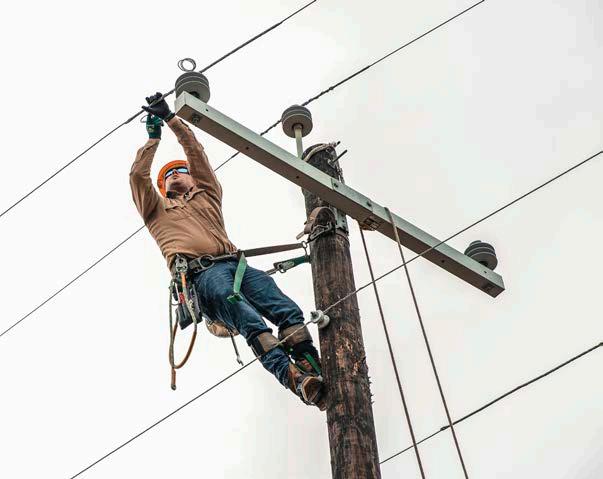
Probablemente no prestes mucha atención a los miles de postes de la luz que se encuentran en el territorio de servicio de Magic Valley Electric Cooperative, ¿pero sabías que estas estructuras altas son la columna vertebral de nuestra red de distribución?
Los postes de la luz, fuertes y resistentes, garantizan un sistema eléctrico confiable, razón por la cual inspeccionamos rutinariamente los postes de nuestras líneas. A lo largo del año, nuestros equipos y contratistas revisan los postes en busca del deterioro causado por la exposición a los elementos, saben cuáles son los postes más antiguos y realizan inspecciones a través de un proceso rotativo. Típicamente, se espera que un poste estándar de madera para distribución eléctrica dure más de cincuenta años. Ocasionalmente, los postes necesitan ser reemplazados por otras razones además del deterioro y la vejez. Desastres climáticos, reubicación de líneas eléctricas y accidentes automovilísticos son causas potenciales de reemplazo inmediato. Cuando es posible, MVEC comunica cuándo y dónde se llevarán a cabo los reemplazos de postes, para que estés informado de dónde estarán trabajando los equipos.
Aquí hay un breve resumen de cómo las cuadrillas reemplazan un poste de la luz:
Cuando se necesita reemplazar un poste, las cuadrillas comienzan el proceso excavando un hoyo, típicamente al lado del poste que se va a reemplazar. La profundidad del hoyo debe ser al menos el 15% de la altura del nuevo poste.
Luego, el nuevo poste debe estar equipado con pernos, brazos cruzados, aisladores, cables de tierra y refuerzos, todas las partes necesarias para proporcionar electricidad segura y confiable. La cuadrilla luego desconecta, de manera segura, las líneas de energía del poste antiguo. El nuevo poste se levanta y se guía cuidadosamente a su posición, y las líneas se conectan, dejando que el nuevo poste haga su trabajo.
Así que la próxima vez que te encuentres con uns cuadrilla de MVEC inspeccionando o reemplazando un poste, ten precaución y toma en cuenta que este proceso asegura un sistema eléctrico más confiable para ustedes, nuestros miembros.

Cinco de Mayo Domingo, 5 de mayo
Día de las Madres Domingo, 12 de mayo
Día de los Caídos (Memorial Day) Lunes, 27 de mayo Nuestras ofcinas estarán cerradas en observancia del feriado.

When a Texas rancher was conned, he spent years tracking down the swindlers
BY W.F. STRONG • ILLUSTRATION BY DANA SMITH
THE YEAR WAS 1921. J. Frank Norfleet, after two years and 30,000 miles of pursuit, finally slapped handcuffs on “Mr. Stetson” in Florida. Stetson—real name Joe Furey— had swindled Norfleet out of $45,000 in North Texas.
“Well, you old trail hound, I never expected to see you out here,” Stetson said. “I thought we left you in Fort Worth, broke.”
Norfleet had no experience in law enforcement, city life or sophisticated cons. He was a rancher, a man who had always lived on the edge of the Texas frontier. So when he made up his mind to pursue the band of bunco men who conned him, he used the only tools he had: unfathomable patience, cutting for
sign, camouflage by way of disguises and weaponry. He out-conned the con men. Norfleet grew up on the Texas plains. He was a trail herder in his early days and eventually managed to buy his own ranch, near Lubbock. By the age of 54, he had finally accumulated some real wealth.
So he went to Dallas with the intent of selling his ranch to buy a bigger one. It was there that con men ensnared him in their sophisticated plot. It went like this.
Norfleet got into a seemingly casual conversation about mules in the lobby of the St. George Hotel in Dallas with a man named Hamlin. Upon hearing Norfleet had a ranch to sell, Hamlin said he just happened to know someone who might
Listen as W.F. Strong narrates this story on our website.
be interested in his land. That person, Spencer, magically appeared and said they would need to go to the Adolphus Hotel to see another man.
When they sat down in the lobby to wait, Spencer cleverly steered Norfleet so that he’d sit in just the right place to discover a man’s pocketbook “lost” in the crevice of the couch. Stetson was the name on an ID card inside. Spencer and Norfleet inquired at the front desk for a Mr. Stetson, got his room number and returned the pocketbook to him.
Stetson (Furey) offered them both $100 rewards. When Norfleet refused, Stetson told him that he was a stockbroker with the Dallas exchange and said, “Would you mind me placing that money on the market and would you accept what money it might earn?”
Later that day, Stetson gave Norfleet $800 as the amount his $100 earned. And that’s how the hook was set. From there, Norfleet handed over his own money and eventually cash guarantees, hoping to grow his wealth in the fake exchange. When the con men cleared out on the last round, absconding with all of Norfleet’s money, he was left repeating to himself in a stunned haze: “$45,000 gone, $90,000 in debt, 54 years old.” They stole nearly $750,000 in today’s money.
Norfleet tells the story of his crosscountry pursuit of Furey—which took him all the way to Mexico, California, Canada and Florida—in his fast-moving autobiography, Norfleet, published in 1924. It’s a great adventure and demonstrates an old cowboy’s enormous creativity and grit. Or read a more modern version historically contextualized in Amy Reading’s The Mark Inside. Whichever you choose, cinch up your saddles nice and snug. It’s a wild ride. D
Celebrate every occasion with fresh and fruity favors of the season
BY VIANNEY RODRIGUEZ, FOOD EDITOR
Spring is here! Bring on the light, fufy and lemony desserts. My Strawberry Pecan Icebox Cake captures the season in every bite. There’s nothing more satisfying than a simple yet elegant dessert you can easily whip up. The best part of this one: It requires no baking.

Pecan Icebox Cake
8 ounces cream cheese, room temperature
1 cup powdered sugar
3 cups heavy cream
1 tablespoon vanilla extract
1 tablespoon lemon zest
1 tablespoon lemon juice
1 box graham crackers (14.4 ounces)
4 cups sliced strawberries ½ cup chopped pecans
1. In a large bowl, beat cream cheese at medium speed until smooth. Gradually add powdered sugar and continue beating until smooth.
2. Add 1 cup heavy cream and beat at low speed until smooth. Add remaining 2 cups heavy cream and mix at medium speed until light and fufy, increasing the speed as the mixture begins to thicken. Fold in the vanilla, lemon zest and lemon juice.
3. Coat the bottom of a 9-by-13-inch pan with cooking spray. Line the bottom of the pan with ⅓ of the graham crackers.
4. Spread ⅓ of the mixture over graham crackers followed by ⅓ of the strawberries and pecans. Repeat layers two times using remaining ingredients, ending with strawberries and pecans.
5. Cover with plastic wrap and refrigerate at least 4 hours or up to overnight.
SE RVES 8–12
Follow Vianney Rodriguez as she cooks in Cocina Gris at sweetlifebake.com, where she features a recipe for Concha Icebox Cake.

PATTI CROW FANNIN EC
Once I bit into Crow’s Poppy Seed Cake, I knew why my abuelita (grandma) enjoyed these tiny gems. This light, moist cake boasts a sweet nutty favor. I love snacking on it with my afternoon tea.
1 package yellow cake mix (15.25 ounces)
1 package lemon pudding mix (3.4 ounces)
½ cup orange juice
½ cup vegetable oil
½ cup water
2 tablespoons poppy seeds
4 eggs
½ cup lemon juice
2 cups powdered sugar
1. Preheat oven to 350 degrees. Coat a Bundt pan with cooking spray.
2. In a large bowl, beat the cake mix, pudding mix, orange juice, vegetable oil, water, poppy seeds and eggs at medium speed 5 minutes. Pour into prepared pan.
3. Bake 45 minutes or until a toothpick inserted comes out clean.
4. In a small saucepan, bring lemon juice and powdered sugar to a boil.
5. Remove cake from pan and poke holes throughout top with a fork. Pour hot glaze over cake. Allow to cool before serving.
SERVES 10–12
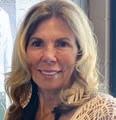
Hello spring … hello yum!
This cake is pure happiness.
A touch of citrus with a pop of pineapple make Giford’s layered cake simply delightful.
SERVES 10
MORE RECIPES >

CA KE
1 can mandarin oranges (15 ounces), undrained
1 package yellow cake mix (15.25 ounces)
¾ cup vegetable oil
4 eggs
1 teaspoon orange extract
FROSTING
1 package vanilla pudding mix (3.4 ounces)
2 cans crushed pineapple (8 ounces each), undrained
1 container whipped topping (8 ounces)
1 teaspoon vanilla extract
1. CAKE Preheat oven to 350 degrees. Coat two 8-inch round baking pans with cooking spray.
2. Reserve a few mandarin segments to decorate cake. In a large bowl, beat remaining mandarin oranges and their liquid, cake mix, oil, eggs, and orange extract at medium speed about 3 minutes.
3. Pour batter evenly into cake pans. Bake 20–25 minutes or until a toothpick inserted comes out clean.
4. FROSTING In another bowl, mix pudding mix, pineapple and its liquid, whipped topping, and vanilla until smooth. Place in fridge to chill at least 1 hour.
5. Once cakes are cooled, place 1 cake layer on a serving plate and spread half the frosting on top. Place the remaining cake layer on top and spread remaining frosting over top and sides of cake, then place reserved mandarin slices on top to decorate.
6. Chill until ready to serve.
PUMPKIN AND SPICE DUE MAY 10
We’re looking for something special for our October recipes. Send us your best by May 10 for a chance to win $500.

MB WATSON
FANNIN EC
This cake is a sweet tribute to Watson’s friend Mary, who was a world-class hostess. No one turned down an invitation to her home or for any of her baked desserts. This cross between a cake and a macaroon is soft and chewy on the inside, crisp and golden on the outside. It’s also the ultimate coconut lover’s dream.
2 cups four
1⅓ cups shredded coconut
3 cups sugar, divided use
1 cup solid vegetable shortening
6 eggs
3 teaspoons orange extract, divided use
½ cup water
1. Preheat oven to 300 degrees. Coat a 9-by-13-inch pan with cooking spray.
2. In a medium bowl, combine four with coconut and set aside.
3. In a large bowl, cream 2 cups sugar and shortening together at medium speed until light and fufy, about 5 minutes. Reduce speed to low and alternate adding eggs, one at a time, and four until all eggs and four are mixed. Add 1 teaspoon orange extract, beating until well mixed.
4. Spoon batter into prepared pan. Bake 45 minutes or until a toothpick inserted comes out clean. Remove pan from oven and set aside.
We found a limited supply of turquoise from Arizona and snatched it up for our Sedona Turquoise Collection. Inspired by the work of ancient craftsmen and designed to showcase the exceptional blue stone, each stabilized vibrant cabochon features a unique, one-of-a-kind matrix surrounded in Bali metalwork. You could drop over $1,200 on a turquoise pendant, or you could secure 26 carats of genuine Arizona turquoise for just $99
Jewelry Speci cations:
• Arizona turquoise • Silver- nished settings
Sedona Turquoise Collection
A. Pendant (26 cts) $299 * $99 +s&p Save $200
B. 18” Bali Naga woven sterling silver chain $149 +s&p
C. 1 1/2” Earrings (10 ctw) $299 * 99 +s&p Save $200
Complete Set** $747 * $249 +s&p Save $498
**Complete set includes pendant, chain and earrings.

5. In a saucepan over medium-high heat, bring water, remaining 1 cup sugar and remaining 2 teaspoons orange extract to a boil. Continue boiling for 1 minute. Carefully pour over cake.
6. Allow cake to cool completely before serving.
SERVES 16
Search “cake” on our website and you’ll fnd dozens of recipes. Whatever you crave this spring, we have you covered.

26 carats of genuine Arizona turquoise ONLY $99


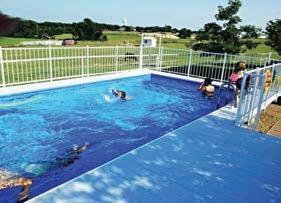



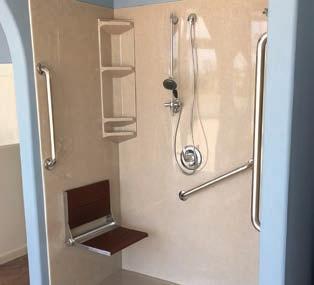

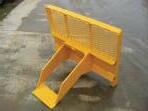


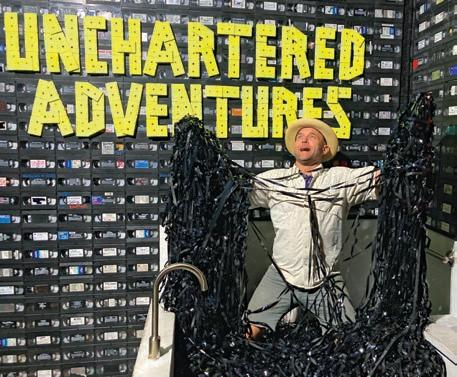
Take a sledgehammer to a printer in Kyle’s ‘rage room’
BY CHET GARNER
IF YOU WERE to envision a day trip to the Pie Capital of Texas, you might picture homey cafés, cozy cups of coffee and buttery crusts filled with sugary happiness. And you can certainly find those things in Kyle, south of Austin. But you can also smash pie plates into tiny bits and shatter coffee cups into smithereens—legally (and safely)—at Unchartered Adventures, a unique indoor entertainment center.
I stepped into what looked like an inconspicuous warehouse on the outskirts of town and met owner Damon Fogley. He started a junk removal business after serving in the Army and soon learned about a phenomenon called rage rooms, where folks can pay to break stuff.
Fogley had more than enough junk for the job, and the concept was born in Kyle. But to create a full-on destination, he added two escape rooms, a zombie shooting range, splatter-paint lounge and plenty of Instagramworthy backdrops. It’s unconventional family fun at its finest.
Before letting out my inner Hulk on inanimate objects, I tried the zombie shooting range. Armed with a gun that shot tiny gel balls, I took aim at zombie robots jumping out from an apocalyptic set. I don’t think I killed any of them (they are undead, after all), but it felt great.
Finally, it was time to rage. And so, donning full-body coveralls and a face shield, I stepped into a room full of bottles, vases, TVs and printers. I picked up a sledgehammer and, with a Neanderthal’s scream, I swung it straight into a coffee maker. It flew across the room, hit the wall and broke into pieces.
It was awesome. I’m not angry by nature, but this was a strange kind of therapy that I think everyone could use. D
ABOVE Chet poses in an Instagram-worthy setting. (No, that is not videotape of The Daytripper show.)
Readers know Chet is a smashing success. See for yourself with the video on our website. Find all his Texplorations on The Daytripper on PBS.
Call ahead or check an event’s website for scheduling details, and check our website for many more upcoming events.
07
09
10
Lewisville The Elton Johns with the She, (972) 219-3401, cityofewisville.com
Corsicana 50 Years of Rock and Roll, (903) 874-7792, corsicanapalace.com
Alamo [10–11] Watermelon Festival & BBQ Cook-Of, (956) 787-0006, alamotexas.org
New Braunfels [10–11] Ballet Texas Presents Peter Pan, (830) 627-0808, brauntex.org
15
16
17
18
23
Lakeway Lakeway Photography Club Meeting, (512) 263-2885, lakewayphotographyclub.com
Luling Field Day, (830) 875-2438, lulingfoundation.org
Giddings [16–18] Lee County Fair, leecountyfairtx.com
Columbus [17–18] Magnolia Days Festival, (979) 732-8385, magnoliadays.org
La Grange Bluf SchuetzenFest, friendsofkbmh.org
Kerrville [23–June 9] Kerrville Folk Festival, (830) 257-3600, kerrvillefolkfestival.org
24
Fredericksburg [24–26] Crawfsh Festival, fbgcrawfshfestival.com
25
Brenham Elvis! by Vince King and the Vegas Mafa Band, (979) 337-7240, thebarnhillcenter.com
Chappell Hill Art Walk, (979) 337-9910, chappellhilltx.com
26
31
Lewisville Fiesta Charra, (972) 219-3401, visitlewisville.com
New Braunfels Antique Barn Sale and Makers Market, (830) 629-2943, newbraunfelsconservation.org
Kerrville [31–June 1] The Comedy of Errors, (830) 896-9393, caillouxperformingarts.com
01
07
Graham Food Truck Championship of Texas, (940) 549-0401, foodtruck championshipoftexas.com
Leander Old Town Street Festival, (512) 259-1907, oldtownstreetfestival.com
Waxahachie [1–2] Gingerbread Trail Tour of Homes, (972) 937-0681, elliscountymuseum.org
Fredericksburg [7–8] Craft Beer Festival, fbgcraftbeerfestival.com
Blanco [7–9] Lavender Festival, (830) 833-5101, blancolavenderfest.com
Ingram [7–8, 13–15, 20–22] Joseph and the Amazing Technicolor Dreamcoat, (830) 367-5121, hcaf.com
We pick events for the magazine directly from TexasCoopPower.com. Submit your August event by June 1, and it just might be featured in this calendar.
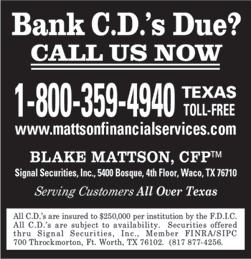
JUNE 7 - 8
JUNE 7 - COMPETITON AWARDS -
- DINNER JUNE 8 - (11am - 7pm) FESTIVAL

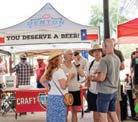
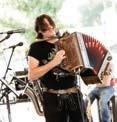
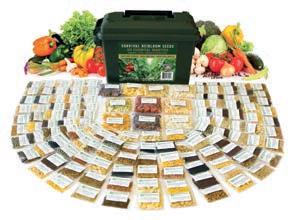






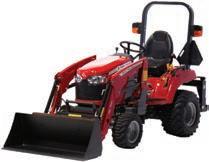


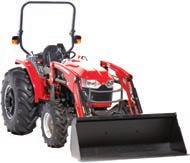

50HP & 60HP Diesel, 4x4, Shuttle Transmissions, R4 Tires, ROPS, Quick
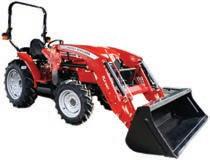


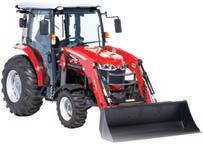


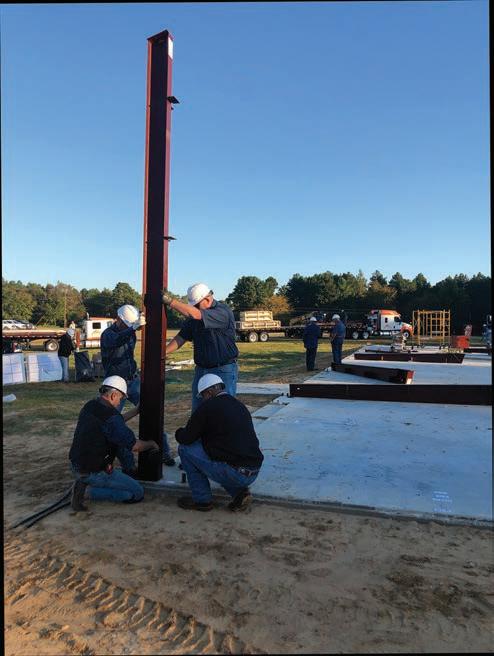
1 RONALD HAVARD
UNITED COOPERATIVE SERVICES
“I caught this jet engine dragster racing a P-51 Mustang during an airshow. It was close, but the Mustang won.”
2 LINDSAY HUMPHREYS SOUTH PLAINS EC
“My son, Brazos, and his grandfather, Bobo, run the barrels at the Dickens County 4-H playday.”
3 TONY KRUP GRAYSON-COLLIN EC
“A lone motocross rider fnishing a ride at sunset in the Dallas-Fort Worth area.”
4 MARK MCCLENDON BANDERA EC
The Poteet Strawberry Festival.
Saddle up or start your engines. Buckle up and hang on tight. Whether it’s on horseback, farm equipment or a thrilling carnival attraction, these rides will blow your hair back.

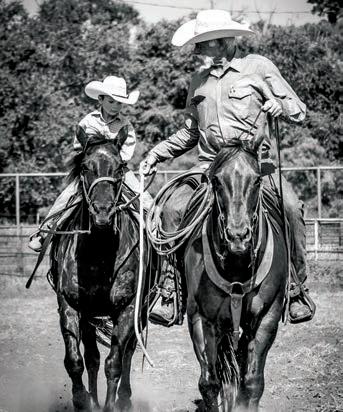
DUE MAY 10 Parenthood
DUE JUN 10 Climbing High
DUE JUL 10 Mascots


Life is better when people and dogs can age together
BY MARTHA DEERINGER ILLUSTRATION BY ELVIS SWIFT

WHEN MY MOTHER finally made the difficult decision to move in with my family in her early 80s, she harbored plenty of misgivings, deciding on the move only when her rheumatoid arthritis and congestive heart failure made it unsafe for her to live alone. Mother brought along her aging West Highland white terrier, Gus, a bone cancer survivor who hopped gamely through the house on his three remaining legs.
Mother left behind a sprawling brick home in town where she had lived for 30 years and took up residence with us in the country in an addition designed to accommodate her needs. Suddenly she was 20 miles from the nearest hub of civilization.
There were plenty of people to take care of her here. Still, she missed her
independence and the opportunity to go out to lunch with friends or run errands on a moment’s notice.
Our grandchildren doted on their great-grandma. They drank her Ensure, did somersaults on her couch, fed Gus their cookies and badgered her to read stories. Since her addition was attached to the main house, she had to install a latch on the inside of her door in order to catch uninterrupted naps.
Gus was also unsettled by the move, his lush St. Augustine lawn replaced by spiky Bermuda grass with cows across the fence. He viewed these large animals with deep suspicion and barked ferociously when they approached his empire, a small separate yard he accessed through a doggie door.
Most of Gus’ time was spent curled beside the swivel rocker where Mother read biographies and watched our pair of free-ranging peacocks, who chose the porch rail outside her window to preen themselves and admire their reflections in the glass.
For a couple of years after she came to live with us, Mother was able to drive to town for haircuts, church and social occasions, but as her health slipped, she stayed home more. Her friends, also in their 80s, came to visit less often.
But she had Gus, and scientists have known for decades that older adults who own pets reap vast benefits.
In good weather Mother strolled our long driveway with Gus’ lead slipped over the handle of her walker. She could talk to Gus about anything. Unlike her greatgrandchildren, he never interrupted.
Gus seemed to know the help he provided, and he was always there beside her, sporting a whiskery grin and waving tail.
She celebrated five Mother’s Days with us before she died, giving three generations of our family the chance to benefit from her wisdom and to learn to honor and appreciate the life lessons older folks can teach us all.
Gus passed away peacefully a few weeks after she did. D



